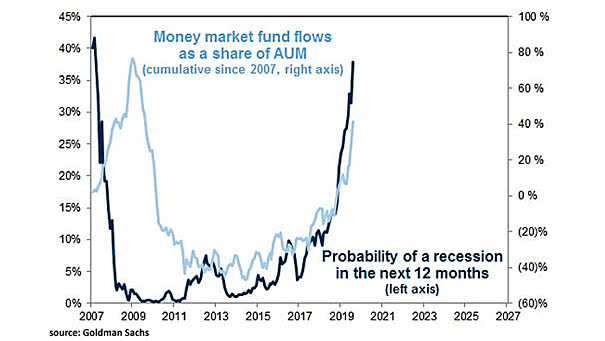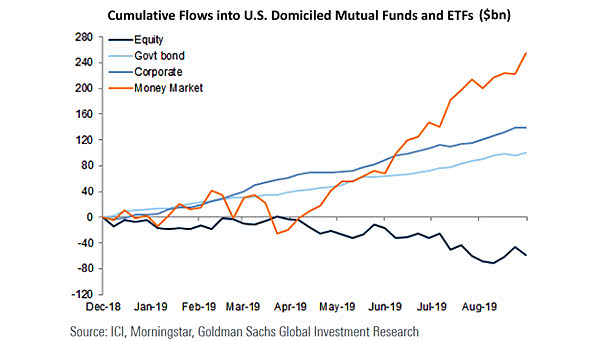Money Market Fund Flows and Probability of Recession
Money Market Fund Flows and Probability of Recession Investors move to safe assets by raising their cash holdings, like 2007/2008. This chart suggests that the probability of a recession in the next 12 months is high. Image: Goldman Sachs Global Investment Research


